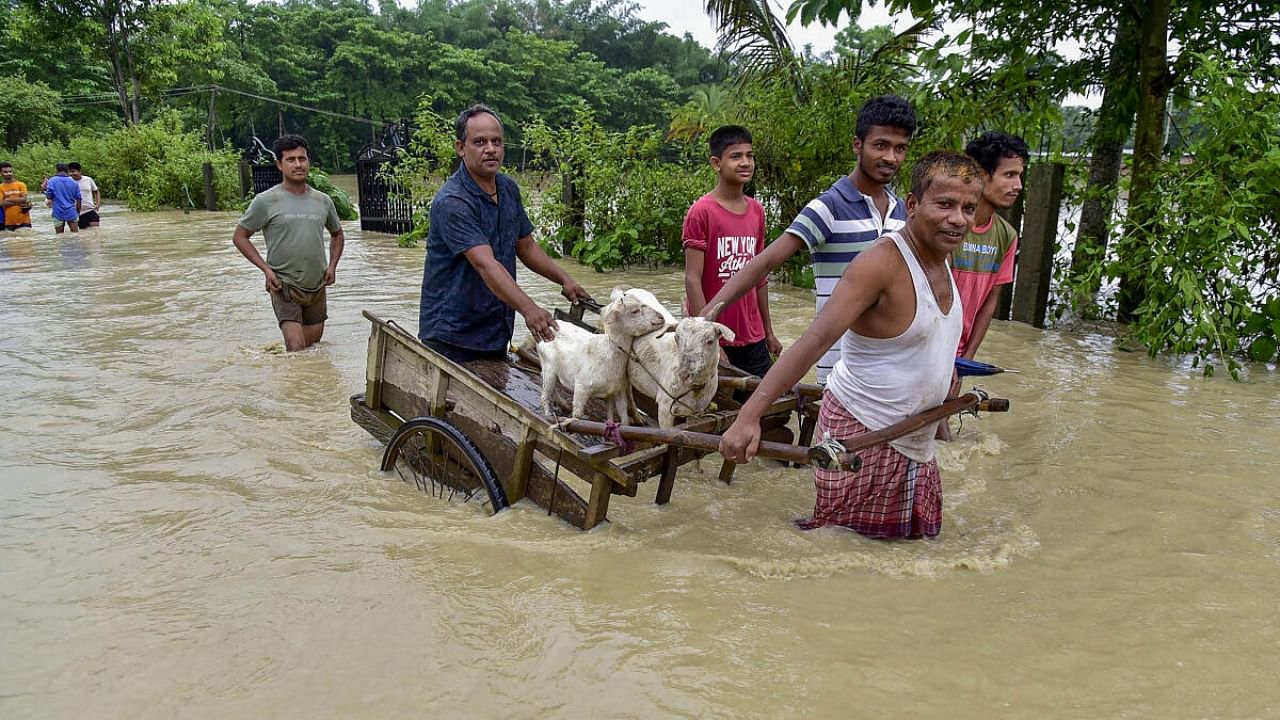
Morgues filled to capacity, overwhelmed hospitals, nearly 170 dead in the heatwave scorching parts of Uttar Pradesh and Bihar, floods in Assam that came too early and have displaced over 30,000 people, landslides in Sikkim — the trail of destruction left behind by that aptly named Cyclone Biparjoy, the truant monsoon and the threat of drought and water scarcity looming over Karnataka, Maharashtra, Telangana, Odisha, and Jharkhand is what climate science has already warned us about. There will be a climate disaster every day, the question is are we prepared?
The Global Assessment Report 2019 of worldwide efforts to reduce disaster risk and impacts, as agreed under the Sendai Framework of 2015, by reducing mortality, numbers of people affected, and economic losses from disasters by 2030 indicates grossly insufficient progress.
The number of disasters worldwide has quadrupled since 1970. In 2018, there were over 3,100 floods, storms, and other extreme events according to the World Disasters Report. The United Nations Office for Disaster Risk Reduction found that between 1998 and 2017 a staggering 91 per cent of all major recorded events were climate-related disasters. According to a report by the Geneva-based Internal Displacement Monitoring Centre, natural disasters, especially heavy floods and cyclones, triggered around 2.5 million internal displacements in India in 2022.
An analysis by scientists at India’s Ministry of Earth Sciences (MoES) of deaths from extreme weather events (EWE) in India in the past 50 years has revealed that though tropical cyclones were the least frequent event, they caused 28.6 per cent of the mortalities, second only to floods responsible for maximum human deaths. Floods and tropical cyclones contribute almost 75 per cent to the total mortalities per year due to EWEs, and now heatwaves and lightning are the main causes as well. Nevertheless, in the case of tropical cyclones, there is a massive decrease in the mortality rate (mortalities per year per million population) over the 50 years due to better disaster management and improved early warning and weather forecasts.
With EWEs increasing in intensity and frequency globally due to Climate Change, the World Meteorological Organization (WMO) has appealed to all countries to put into place life-saving early warning systems for all hazardous weather events by the end of 2027. According to the Global Commission on Adaptation, giving just 24 hours’ notice of an impending hazardous event can reduce damage by 30 per cent.
Staying connected
Robust early warning systems and timely dissemination of weather forecasts are vital for efficient disaster management, however with the highly localised and sudden nature of extreme weather events that we are experiencing today, it is sometimes impossible to reach the last mile or the most marginalised in time. This is why social connectedness is so vital for resilience to disasters.
Communities with robust social networks have been shown to have fewer deaths and bounce back quicker from disasters. Being connected to your neighbours is a powerful resilience tool that is mostly underutilised. The finest example of the role of social connectedness was experienced during the 2018 floods in Kerala, where communities with more ties, interaction and shared norms worked effectively to organise, collect, and provide aid and assistance to kin, family, and neighbours.
With natural disasters the ‘new normal’ around the world, mobile technologies have become an important lifeline before, during, and after catastrophic events. WhatsApp messages from upstream Bhutan villagers to their neighbours in Assam have saved countless lives in events of cloudbursts and flash floods. After a 7.5 magnitude earthquake and tsunami hit Sulawesi, Indonesia on September 28, 2018, causing more than 1,700 deaths and displacing over 70,000 people from their homes, local residents turned to their mobile phones and the legendary AtmaGo mobile app to alert and support friends, family, and neighbours. In the Sunderbans, I met a man who has downloaded the Damini App, which forecasts lightning strikes, information he shares in his neighbourhood messaging group.
‘Resilience’ isn't just about constructing better buildings — it's also about strong communities. After all, neighbours are your first responders. A study from the Associated Press and National Opinion Research Center, University of Chicago, found that villagers who fared best after the disaster weren’t those with the most money or the most power — they were people who knew lots of other people — the most socially-connected individuals.
To the question are we prepared to cope with relentless climate disasters unfolding around us, the answer is yes, if we are willing to help our neighbours. Social cohesion is a critical component of building resilience. Technology can help; however, it is compassion that will help us all survive climate disasters.
(Shailendra Yashwant is a senior adviser to Climate Action Network South Asia (CANSA). Twitter: @shaibaba.)
Disclaimer: The views expressed above are the author's own. They do not necessarily reflect the views of DH.